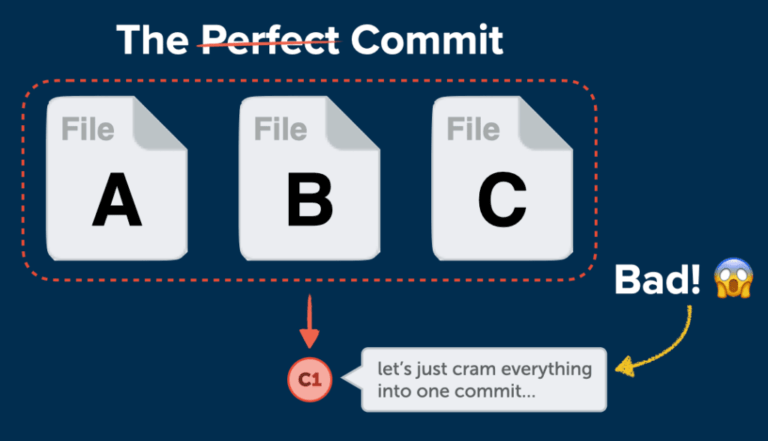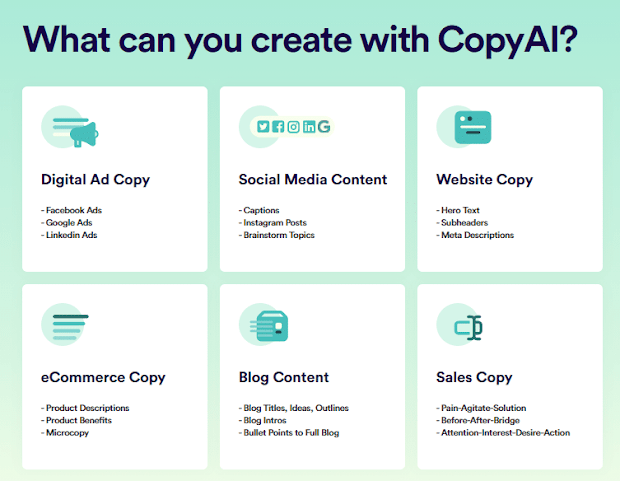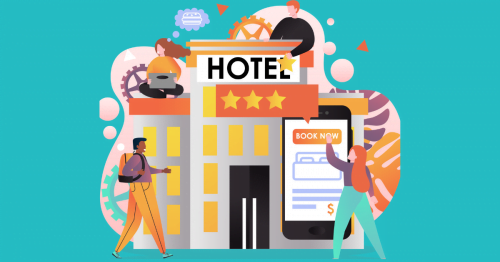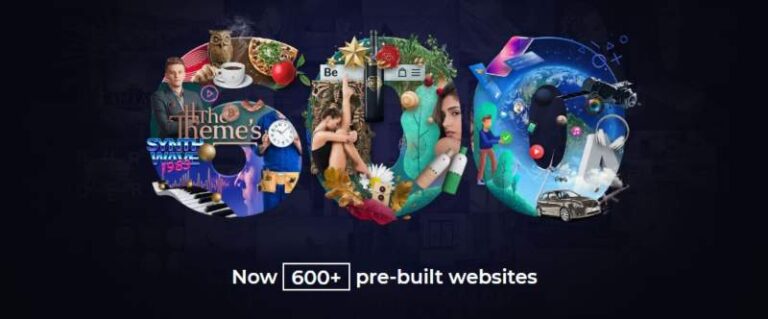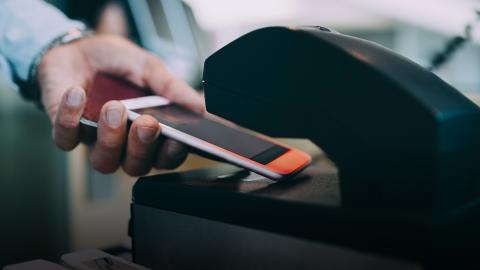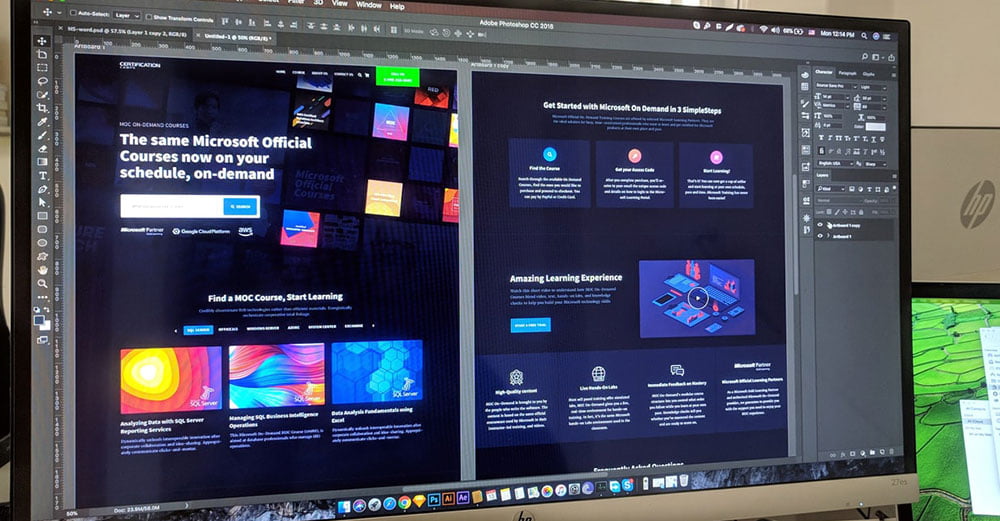
The world is changing, and so does web design. According to 2021’s web design trends, they all have a common theme, and, despite all the predictions about sci-fi “ish” graphics, the things are more down-to-earth. It’s about blending the digital and the ordinary and seeking new heights of realism. In a nutshell, modern graphic design comes down to reflecting the role of websites in our everyday lives in the most organic manner.
Modern websites are the drivers of conversion for many businesses. So, once you decide to hire a programmer, make sure to accompany them by a skilled UI/UX designer. To attract customers, the companies have to give them what they’re looking for, and the interface of their websites is one of the primary factors that engage people.
In this article, we’ll cover the most significant trends you can follow to make your website stand out.
1. Neumorphism
Table of Contents
This seemingly complicated term crosses the words “new” and “skeuomorphism.” Mainly, it turns flat icons into realistic, 3D objects. If the interface looks as if it was vacuum-formed, it is referred to as neumorphism or “soft design.” It aims to achieve an extruded plastic look and graphic-intense buttons and switches by combining background colors, shapes, gradients, highlights, and shadows.
Neuromorphic buttons and other elements have a dark box-shadow below and a light box-shadow above. For what? To create the look and feel of the real buttons and other components as if they were pushed through the display. In other words, it allows for a tactile experience that was lost in the era of flat design.
2. Minimalism
Aesthetically pleasing design is a go-to solution for websites. Flashy features that distract visitors from achieving their goal, finding necessary information, or booking a call with the company aren’t in fashion anymore. Consumers are already overwhelmed with information, so there’s no need to increase its levels via ads and interfaces that are chock full of different elements and animations.
The websites understand that it’s necessary to minimize the number of elements and fields and prevent customers from taking extra actions. This trend goes for everything, from the simplified registration form to a clear layout.
3. Retro fonts
Old things come cool again, and retro fonts are among them. However, it’s not about using the same tired fonts that haven’t aged well. It’s about stylization and creativity aimed at reimagining the ways what retro fonts can be. Giving a fresh impetus and experimenting with traditional fonts helps to catch users’ attention, making retro-futurism an effective solution to attract different generations of customers.
Typographic reimagining is a prerequisite for a website’s success, but it’s necessary to remember to keep the balance and not dive too deep into the old-fashioned fonts.
4. Dark mode
Most of the devices now can switch between light and dark modes, so even if the dark color scheme isn’t the default one in your case, it’s still necessary to consider it. Many users prefer dark mode, and the designers try to adapt to it by opting for dark color palettes and UI designs.
However, the dark mode has a moody effect, so it’s essential to understand whether it won’t hinder the process of your messages to the clients. We should point out that this isn’t about simply reversing the color palette; instead, it implies combining deeper and darker colors to create the same visual feel as light mode provides.
5. Horizontal scrolling
Although horizontal scrolling makes your website different, it’s still important to understand whether it really benefits from it or it’s just a fashion statement. Horizontal scrolling is tricky, and it works best when you need to disclose secondary information, like pictures, more practically.
When opting for this trend, be thoughtful about the users’ convenience. Make sure to use clear visual cues to help them navigate through the website and evaluate what elements they’ll benefit from when displayed in a horizontal scroll.
6. Comfortable colors
Since remote work is a new normal, experiencing eye strain after staring at the screen for the whole working day is prevalent among users. To help people cope with this problem, web designers opt for color schemes that are easier on the eyes. Pastel blues, wholesome greens, warm browns, and light purple are among the most popular colors in the soft palettes.
This trend enables accessibility and comfort, naturally inducing calm and relaxation among the users.
7. Interactive 3D Content
Captivating, engaging, and exciting visuals are adding to the overall user experience, seamlessly weaving into web designs. This trend allows designers to unleash their creativity while making a bigger impression on the users and not overfill the minimalistic designs with unnecessary elements.
8. Three-dimensional colors
Although gradient color schemes have been trending for a while now, 2021 gives them a boost to become more lifelike. Currently, it’s about making the colors interact with each other while retaining the depth and shadows, aspiring to higher realms of realism.
9. Hand-drawn elements
Sketches are a form of design, again. They help to reflect individual styles and present websites in a fashionable and exciting manner, attracting more users. Black and white drawing styles seem real and in-the-moment, matching almost any design aesthetic. Accompanied by muted colors, hand-drawn styled texts and illustrations make the design and website feel more natural.
10. Preference-based design
Some people prefer light mode, while others—dark, and allowing them to change the website’s appearance is a bonus point for any business. It’s about personalization and making each customer feel valued. The design is becoming more user-centered and custom-tailored.
Approaching your website like the custom playlist on Spotify is an efficient practice because it allows you to meet the demands and tastes of a larger audience.
Conclusion
Visually enriched websites of pastel colors that are developed following the minimalist layout and allow for customization are the websites that will remain on top in 2021. Attention to the web design enhances user engagement, improves user experience, and increases conversion. In addition, embracing design trends and leveraging them implies having higher chances to stand out among your competitors and attract more clients.

